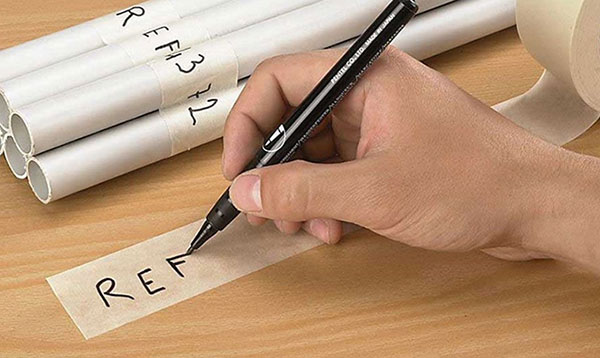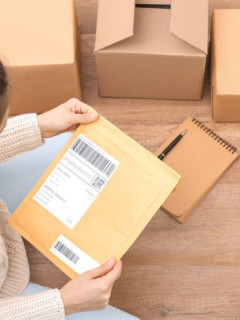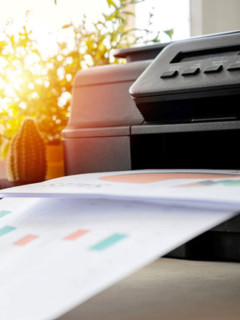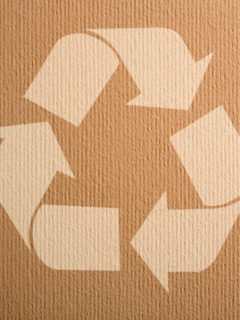Masking tape has many different uses, some more obvious than others. Painters use it to mark corners and edges. You can also use it to temporarily bind products together or apply fasteners. Or you use it to place temporary markings… Let’s take a closer look at all of these and go through which tips and tricks will help you get the most out of your masking tape.
Four versatile applications of masking tape
► 1. Masking
We start with the most obvious function. As the name clearly indicates, masking tape primarily serves to ‘tape’ things down. Of course, this is particularly popular with painters. They use masking tape or painter’s tape to:
- separate two colours on the same wall;
- separate the wall from the ceiling or floor;
- paint quickly without colouring out of line.
Painting tape is made of fine crepe paper as standard, making it easy to tear off by hand. The tape has a light adhesion, which ensures that it is also easy to remove again. It also leaves no glue marks on the surface. So you eliminate any risk of damaging the backing. Incidentally, it adheres not only to walls but also to metal, glass, plastic, wood, etc. Painting tape is resistant to water and temperatures up to +60 °C, but there are also versions that can be used briefly in environments up to +80 °C. So in a spray booth or a print shop, this type of tape comes in handy.

1.1 How to use masking tape BEFORE painting?
-
Level the surface you want to tape and paint. If you stick the tape on an uneven surface, the paint applied may creep behind the tape. This is something you should avoid, of course.
-
Clean the surface before you start painting. Painting tape adheres less well to damp, greasy or dusty surfaces. This also prevents stains being left on your wall after painting.
-
It is best to test the masking tape on an inconspicuous spot first. That way you will know for sure that the tape is suitable for that surface.
-
Do not stretch the tape unnecessarily before applying it. This prevents the tape from bulging and the paint from ending up underneath it.
-
Use narrow masking tape (from 1.9 to 3.8 cm) for masking smaller irregularities (such as switches). With wider tape (of 5 or 7 cm) you can easily cover colour areas on a wall or the separation between a wall and a ceiling/floor.
-
Preferably always use long pieces of tape. This increases the chances of painting straight and tight lines.
-
Masking tape has a lighter adhesive strength as standard. So press the masking tape firmly onto the surface before you start painting.
-
Masking frames and borders is one thing. But you shouldn’t forget to cover larger surfaces too. A splash of paint on a sofa or table should, of course, not be the intention. Fortunately, there are practical solutions such as furniture covers and masking sheets. Your floor is best covered with pieces of cardboard, such as these dividers.
1.2 How to use masking tape AFTER painting?
-
Ideally, remove the masking tape shortly after applying the final layer of paint. If you leave the tape in place, the paint will penetrate the crepe paper. Consequence? You will no longer have a nice straight line after removing the tape. Removing the tape quickly will also prevent discolouration on your wall.
-
Remove the tape slowly and evenly, preferably at a 45° angle.

► 2. Bundle
]Masking tape also comes in handy when you want to bundle loose, lightweight items. If you are moving house, for example, you can use masking tape to easily bind or bundle loose items together for a short time: a stack of pipes, slats, table legs, and even your collection of pens and pencils. Nothing will be left lying around! By the way, you can easily remove the tape afterwards without damaging the carrier.
► 3. Close
]Just like with PP or PVC tape, you can also use masking tape to seal packages. The price of masking tape is slightly lower and it is also easier to remove. Keep in mind that masking tape is not UV-resistant. When exposed to daylight, its adhesion deteriorates over time. But of course, that shouldn’t stop you from using this tape for temporary closures.
► 4. Highlight
]As we had mentioned above, masking tape is made of crepe paper. That makes it easy to tear off, but that also brings a second advantage: it makes the tape easily writable. This comes in handy when you want to temporarily mark a location or identification in your warehouse or office (for example, when you are moving house). You stick the tape wherever you want, write a name or serial number on it, and you can quickly find the right items!















